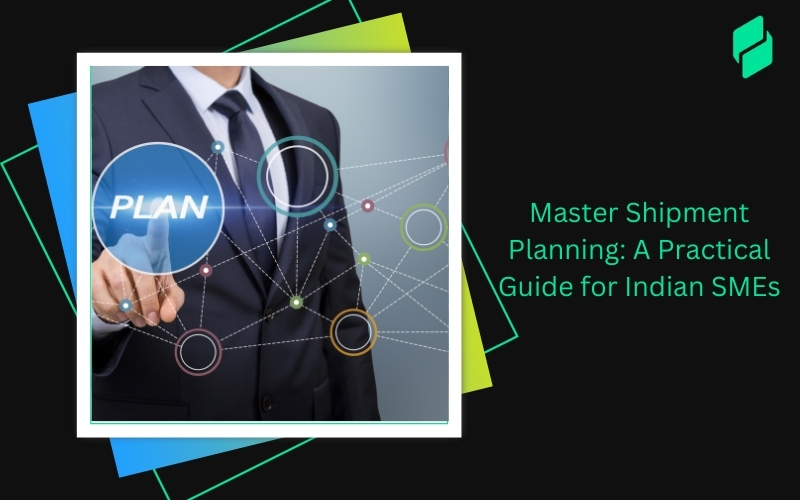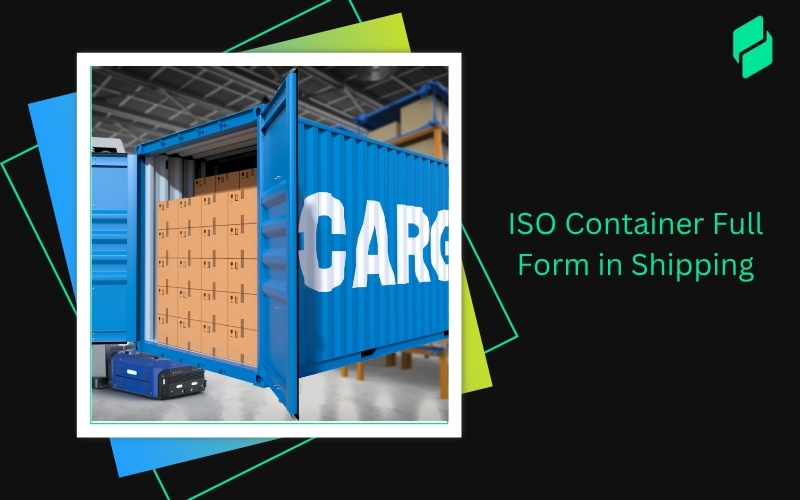Optimize your business: use unlimited savings with Pazago fulfilled now!
Get Started ->Have you ever wondered how your favourite imported goods make their way from distant shores to your local market? Or how do India's bustling industries manage to send their products across the globe? The answer lies in the complex yet fascinating world of multimodal logistics.
- What Exactly is Multimodal Logistics?
Multimodal logistics refers to the seamless movement of goods using two or more modes of transportation - be it road, rail, air, or sea. It's like a well-choreographed dance, where each mode plays its part in perfect harmony to ensure your cargo reaches its destination efficiently and cost-effectively.
- Why is Multimodal Logistics Crucial for India?
In a country as vast and diverse as India, multimodal logistics isn't just a convenience - it's a necessity. From the bustling ports of Mumbai to the landlocked industries of Madhya Pradesh, multimodal logistics acts as the lifeblood of India's economy. It's the key to unlocking India's potential as a global manufacturing hub and export powerhouse.
- The Big Picture: Objectives and Economic Impact
The Indian government has set ambitious objectives for the logistics sector:
- India’s National Logistics Policy aims to reduce logistics costs from the existing 13-14% to a global average of 8% by 2030
- Improve India's Logistics Performance Index (LPI) ranking
- The Indian logistics sector is expected to generate employment for 40 million people by 2025
The potential economic impact? Staggering. The logistics sector is projected to generate $360 billion in value-add by 2032, up from $115 billion today; that's not just growth - that's a transformation!
Current Challenges: The Roadblocks to Smooth Logistics
So, what's standing in the way?
- The Modal Muddle: An Unfavorable Inter-Modal Mix
Road transport heavily skews India's transport mix, accounting for about 60% of freight movement. This over-reliance on a single mode leads to inefficiencies and increased costs. The ideal mix? A balanced combination of road, rail, waterways, and air transport.
- Fleet Frustrations: The Inefficient Fleet Mix
A mismatched wardrobe, India's logistics fleet, doesn't quite fit the needs of modern commerce. With a predominance of small, old trucks and a lack of specialised vehicles, the current fleet mix struggles to meet the diverse needs of different industries.
- Inadequacies: Handling the Pressure
Outdated material handling equipment at ports and insufficient warehousing facilities are straining India's logistics infrastructure under the weight of growing trade volumes. The result? Delays, damages, and spiralling costs.
- The Road Less Traveled: Underdeveloped Road Infrastructure
While India boasts the world's second-largest road network, quality remains a concern. Congested highways, poor last-mile connectivity, and inadequate road maintenance create bottlenecks in the logistics chain.
- Regulatory Roadblocks: Navigating the Bureaucratic Maze
Logistics operators in India face daily challenges like complex regulations, multiple clearances, and paperwork nightmares. The Multimodal Transportation Act of 1993 marked a step in the right direction, but slow progress has left the sector tangled in red tape.
Government Initiatives: Paving the Way for Progress
But here's where things get interesting.
- PM Gati Shakti: A Masterplan for Multimodal Connectivity
This ambitious national plan aims to break departmental silos and bring 16 ministries together for integrated infrastructure planning. It's like a grand orchestra conductor, ensuring all parts of the logistics symphony play in harmony for India’s biggest SCM companies.
- Logistics Division: A Dedicated Driver of Change
The government has signalled its commitment to developing an efficient logistics ecosystem by establishing a Logistics Division in the Ministry of Commerce and Industry. It's the brain centre for policy formulation and implementation.
- Integrated Logistics Portal: One-Stop-Shop for Logistics
Digital platforms aim to connect buyers with logistics service providers, simplify documentation, and provide real-time shipment tracking. It's like having a logistics command centre at your fingertips!
See how it works.
- PPP Model: Partnering for Progress
The government is encouraging public-private partnerships to develop world-class multimodal logistics parks. These parks will serve as hubs for freight aggregation, distribution, storage, and multimodal transportation.
- Manufacturing Boost: Meeting Sector-Specific Demands
Recognising the unique logistics needs of the manufacturing sector, the government is promoting comprehensive logistics solutions. From automotive to pharmaceuticals, each industry will have tailored logistics support.
Innovative Solutions: Bridging the Gap
Now, let's talk about some game-changing solutions.
- Agile and Shared Mobility: Flexibility in Motion
The rise of shared mobility platforms is revolutionising last-mile delivery. Imagine a world where idle trucks and warehouses become a thing of the past, replaced by an on-demand, flexible logistics network.
- Digital Transformation: Visibility from Source to Destination
Technologies like IoT, AI, and blockchain are providing end-to-end visibility across different modes of transport. It's like having a crystal ball that shows you exactly where your shipment is at any given moment!
- Unified Payments System: Smoothing Financial Flows
India's Unified Payments Interface (UPI) is being extended to logistics, simplifying transactions across the supply chain. Say goodbye to payment delays and hello to seamless financial flows!
- Green Logistics: Reducing the Carbon Footprint
From electric vehicles to optimised route planning, innovative solutions are making logistics more sustainable. It's not just good for the planet - it's good for business too!
- Industrial Hubs: Multimodal Logistics in Action
Special Economic Zones (SEZs) and industrial corridors are becoming hotbeds of multimodal logistics innovation. These hubs are showcasing how integrated logistics can drive industrial growth.
- Rail Renaissance: Shifting Container Cargo from Road to Rail
Dedicated Freight Corridors and improved container handling facilities are making rail transport more attractive for container cargo. It's a win-win - faster transit times and reduced road congestion!
Adoption and Implementation: Success Stories and Opportunities
It's one thing to discuss solutions, but seeing them in action is another story altogether.
- Logistics: The New Economic Superstar
The government's recognition of logistics as a key economic driver is leading to increased investments and policy support. It's no longer just a support function - it's a strategic advantage!
- Success Stories: Learning from the Best
Maersk's India-Bangladesh Cross-Border Logistics has reduced transit times by 50% and costs by 20%
Steel's Multi-Modal Routes: By leveraging a mix of rail, road, and coastal shipping, Tata Steel has optimised its supply chain and reduced costs
- Automotive Acceleration: Opportunities in the Supply Chain
The automotive sector, with its complex supply chains, stands to gain immensely from multimodal logistics. Just-in-time manufacturing could become a reality across India with efficient multimodal transport.
Industry Insights: The Road Ahead
Okay, we've talked about the present - what about the future?
- Simplify and Digitize: The Twin Mantras
Industry experts unanimously call for regulatory simplification and accelerated digitalisation. It's about cutting through the red tape and embracing the digital revolution.
- Learning from the West: Sustainable Infrastructure
India can learn from Western countries in developing sustainable logistics infrastructure. From green warehouses to efficient intermodal terminals, there's a wealth of knowledge to tap into.
- Case Study: Adani Ports' Multimodal Marvel
Adani Ports' integrated logistics model combines ports, rail, and inland container depots to create a streamlined and efficient supply chain network. This approach reduces transit times and costs while enhancing overall logistics performance.
Key Components:
- Ports: Adani Ports operates a network of deep-draft ports equipped with advanced technology for quick cargo handling. This minimizes turnaround times and increases throughput.
- Rail Connectivity: Dedicated rail corridors and logistics parks connect ports with inland destinations, reducing road congestion and offering a cost-effective transportation alternative.
- Inland Container Depots (ICDs): Strategically located ICDs near industrial hubs facilitate efficient inventory management and cargo consolidation, further optimizing the supply chain.
Impact:
- Efficiency: The integrated model cuts logistics costs and transit times, setting a benchmark for the industry.
- Environmental Benefits: Reduced reliance on road transport lowers emissions, aligning with sustainability goals.
- Scalability: The model is adaptable to future growth and technological advancements.
- Supply Chain Visibility: Enhanced control and visibility lead to better decision-making and proactive management.
Future Outlook: The Horizon of Possibilities
So, what does the next chapter in this story hold?
- Growth Projections: A Trillion-Dollar Opportunity
Projections indicate that the Indian logistics market will reach $380 billion by 2025. With multimodal logistics at its core, this growth will ripple across the entire economy.
- Climbing the Ranks: Improving India's LPI Score
Experts expect current initiatives to significantly improve India's Logistics Performance Index (LPI) score. The target? To break into the top 25 countries in logistics efficiency.
Your Multimodal Export Operation Partner: Pazago
If all this seems a bit overwhelming, don't worry - we've got you covered. Ready to navigate the complex world of multimodal exports? Pazago is your trusted guide and partner. Here's how we can revolutionise your export operations:
- Real-Time Tracking: Our advanced tracking system gives you visibility across all modes of transport. No more guessing games about your shipment's location!
- Seamless Integration: We bring together road, rail, air, and sea transport under one platform. It's like having an export control tower at your fingertips.
- Digital Documentation: Say goodbye to paperwork nightmares. With Pazago, all your documents are digitised and easily accessible. No more lost papers or delayed clearances!
- Cost Optimization: Our intelligent algorithms help you choose the most cost-effective multimodal routes. Watch your export costs shrink, and your profits grow!
- Regulatory Compliance: We stay on top of the latest regulations, ensuring your shipments are always compliant. Let us handle the red tape while you focus on your core business. Ready to transform your export operations? Contact Pazago today and step into the future of multimodal exports!
Conclusion: Embracing the Multimodal Future
So, what's the takeaway here? The journey of multimodal exports in India is just beginning. While challenges persist, the opportunities are immense. With government support, innovative solutions, and partners like Pazago, Indian businesses can leverage multimodal transportation to boost efficiency, reduce costs, and compete on a global scale. Are you ready to be part of this export revolution? Don't let the complexities of multimodal transport hold you back. Embrace the future with Pazago as your export management partner and watch your business soar to new heights in the world of international trade!


.png)








